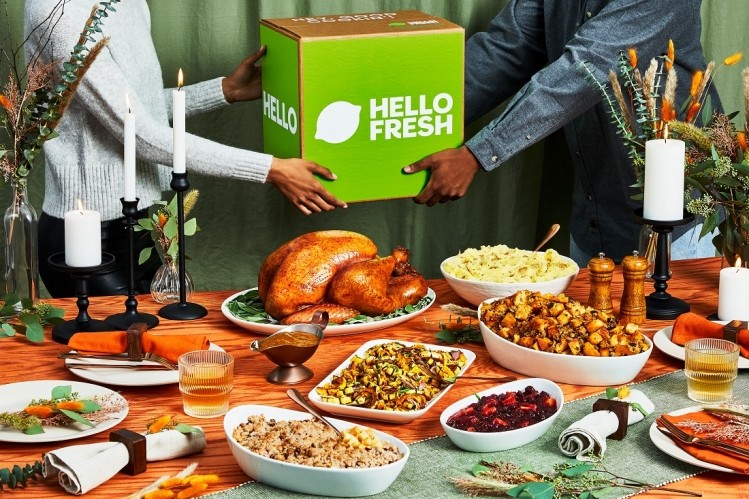HelloFresh sees bright outlook for meal kits market as consumers 'unbundle' and 'reallocate' food budgets

In Q3 2021 (three months ended Sept. 30, 2021), the 10-year-old meal kit company recorded 45% year-over-year revenue growth to €1.4bn (US$1.6bn) globally and 49.9% year-over-year growth in the US hitting €791.4m (US$915.84) in revenue for the quarter.
Active customers grew from 5 million customers globally in Q3 2020 to 6.94 million at the end of Q3 2021 (+37.8%). The company's US customer base grew from 2.49 million active customers to 3.48 million (which includes customers from the Factor acquisition late last year), a +39.8% year-over-year increase in the same time frame.
"These growth rates in a post-COVID environment are higher than almost any other e-commerce player in Europe or the US that we know of," said HelloFresh CEO Dominik Richter on the company's earnings call.
Average orders per customer per quarter slightly increased from 3.9 in Q3 2020 to 4.0 in Q3 2021 and up 14% from 2019 pre-pandemic levels, reflecting high customer engagement despite the reopening of restaurants and consumers resuming in-store grocery shopping more frequently for their meal purchases, said Richter.
Average order value also increased (+3.2%) to €51.3 per order in Q3 2021 compared to €49.7 in same quarter last year, and up 6% compared to 2019.
"The main drivers here were increased take up of our HelloFresh Marketplace items and the tendency to take more meals on average as we've broadened the choice for consumer and now have larger menus in basically all of our geographies," said Richter.
'We want to change the way people eat forever'
"If you go back to our IPO prospectus [from November 2017], you’ll find that we’ve been remarkably consistent with how we think about our long-term growth strategy... We want to change the way people eat forever," said Richter, who noted that tapping into at-home dinner occasion continues to be the company's biggest opportunity for its growing line of meal kits and ready-to-eat meal solutions.
"Seven out of 10 dinners globally, and five out of ten dinners in the US are cooked and consumed at home," said Richter.
"This is really one of the largest consumer spend categories. And we believe in the last 10 years we’ve already fundamentally changed for millions of consumers globally how they actually think about getting a great home cooked meal on the table, allowing them to eat better, cheaper, and more delicious meals."
Speaking about the total addressable market (TAM) for HelloFresh, Richter shared that the company has made significant progress with entering new geographies within the past year including a launch in Italy, with a 26 million household market opportunity, and in Australia with the acquisition of Youfoodz.
"While we’re very bullish on the growth outlook and penetration upside for the meal kits business itself in our existing and yet to be launched new geographies, we’ve also broadened our product suite quite massively and the accessible TAM has increased significantly as a result of that," he said.
'Unbundling of the traditional consumer food budget'
According to Richter, while the meal kit category at large may have struggled to establish a foothold in consumers' day-to-day meal time routines in past years, he believes that meal kits have become a routine choice for consumers, especially as many were exposed to concept during the height of the pandemic in 2020 and maintained their loyalty towards the service.
"We firmly believe that what you’re currently seeing is the unbundling of the traditional consumer food budget, which has for a decade been going to primarily grocers and restaurants with little, little change over time. We believe we can play a major role when food budgets are being reallocated in the next couple of years away from traditional grocers," noted Richter.
"Most of our qualitative and quantitative data points show us that consumers have resumed a more normal routine after summer, and we believe that the isolated COVID behavior is now mostly behind us with customers having settled into new routines and picked up learned behaviors again."















